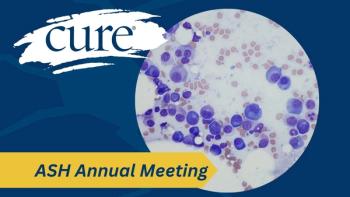
Maintaining Oral Health and Cancer
Charles W. Wakefield attended the UCLA School of Dentistry and served in the U.S. Army Dental Corps. Currently, he is in private practice with his son in Lewisville, Texas.
THE PATIENT IS REFERRED to my dental practice, which is next door to the medical center. He is fourth on the heart transplant list and has facial swelling with a large abscess around a tooth that has been in a diseased state for years. In his immunocompromised state, an infection could lead to a potentially fatal situation. Another patient, two months post-liver transplant, significantly immunosuppressed, is referred to me with a severe oral infection. Other patients are sent to me with varying conditions involving the oral cavity, including teeth, gums and bone surrounding the teeth, which could lead to a systemic bacteremia that could have negative consequences for the patient. The most common complaint from patients undergoing chemotherapy who are immunocompromised is that they have difficulty eating because they suffer from mucositis, which is an inflamed, red, raw, sore mucous membrane lining in the mouth and throat.
Chemotherapy attempts to kill the fast-growing cancer cells, but in addition to the desired therapeutic goal, it also affects other fast-growing cells such as hair, bone marrow and the tissue lining the mouth. The oral mucosa exists in a traumatic environment, with different temperatures, acidity, trauma of chewing, etc., and it turns over and is replaced every 10 to 14 days. When this replacement process is disturbed with chemotherapy, patients are extremely sensitive to acid, spicy, hot and gritty foods, and are often unable to eat. Nutrition is critical to these patients, and there are protocols to control this sensitivity that begin with frequent warm saline rinses and advance to topical anesthetics, coating with various solutions, to narcotics to facilitate eating. Then there are the infections mentioned above that may lead to very serious consequences, including organ rejection or death. But could this be controlled or even prevented proactively?
The oral cavity has between 400 to 500 potentially pathogenic bacteria in its normal flora. These are tolerated well in normal patients with normal quality and quantity saliva. (Saliva is an entire subject for another post, though). The anatomy of the oral cavity has teeth, the gums and bone. The tooth roots go deep into the bone for anchorage and contact the systemic blood vessels. Inflammation in the mouth must be controlled so that the bacteria don’t enter the bloodstream. This can be prevented through excellent oral hygiene — there is a collar a few cells in depth that seals the crown of the tooth so bacteria remain in the mouth, but if this breaks down, there is constant bacteremia throughout the body. When you have a dental exam, the hygienist probes around all the teeth to measure the depth of the small crevice, called a sulcus, around all teeth. If this is less than 4 mm deep, careful oral hygiene is able to control the inflammation. Greater than 4 mm is unmanageable, even in healthy patients. If patients brush or floss and notice even a slight amount of bleeding from the tissue surrounding the teeth, there is systemic bacteremia.
This is called the oral-systemic connection, and can contribute to a variety of conditions such as pre-term birth babies, low birth weight babies, Alzheimer’s disease, renal disease, diabetes, cardiovascular disease and aspiration pneumonia.
Oral hygiene is important for many reasons, but in transplant and all immunocompromised patients with cancer, it is critical. In most patients, there is a gray area in which a dentist may “watch” an area of minimal or potential pathology and attempt long term maintenance therapy that may succeed. But in an immunocompromised patient, there is no “watch” area, it is either meticulously clean and maintained, or not. Before chemotherapy, radiation or antiresorptive therapy is initiated, all pathology must be definitely eliminated, and an environment created that the patient is able to maintain — this depends on motivation; diet; dexterity and ability; caregivers and education; and close supervision by a dentist or hygienist who is familiar with these conditions. Once treatment starts, as with the two patients presented at the beginning of this post, there can be problems. Infections may progress unchecked and if extraction or surgery is required, patients often cannot tolerate the stress and are unable to heal properly. Hospitalization and the resultant “Who is going to pay?” situation can then arise.
In summary, it is absolutely essential that the oral cavity and its health are meticulously evaluated and treated prior to initiation of treatment for cancer. Physicians, nurses, dentists, oral hygienists and dieticians must create a team to prevent potentially devastating conditions. All problems cannot be prevented (but many can) and patient discomfort can be managed. The good news with chemotherapy is that, most of the time, it is a transient situation.
Charles W. Wakefield, DDS, MAGD, ABGD, FICD, FACD, attended the UCLA School of Dentistry and served in the U.S. Army Dental Corps. He has served as a consultant to the American Dental Association. Currently, he is in private practice with his son, Brian Wakefield, DDS, FAGD, in Lewisville, Texas.Wakefield is also a multiple myeloma patient who had a transplant in 2004. He was told to minimize brushing and flossing when his platelets fell to 18,000. Using a technique with minimal trauma, Wakefield says he brushed, flossed and rinsed with 0.12 percent chlorhexidine twice daily to maintain oral hygiene without bleeding.




